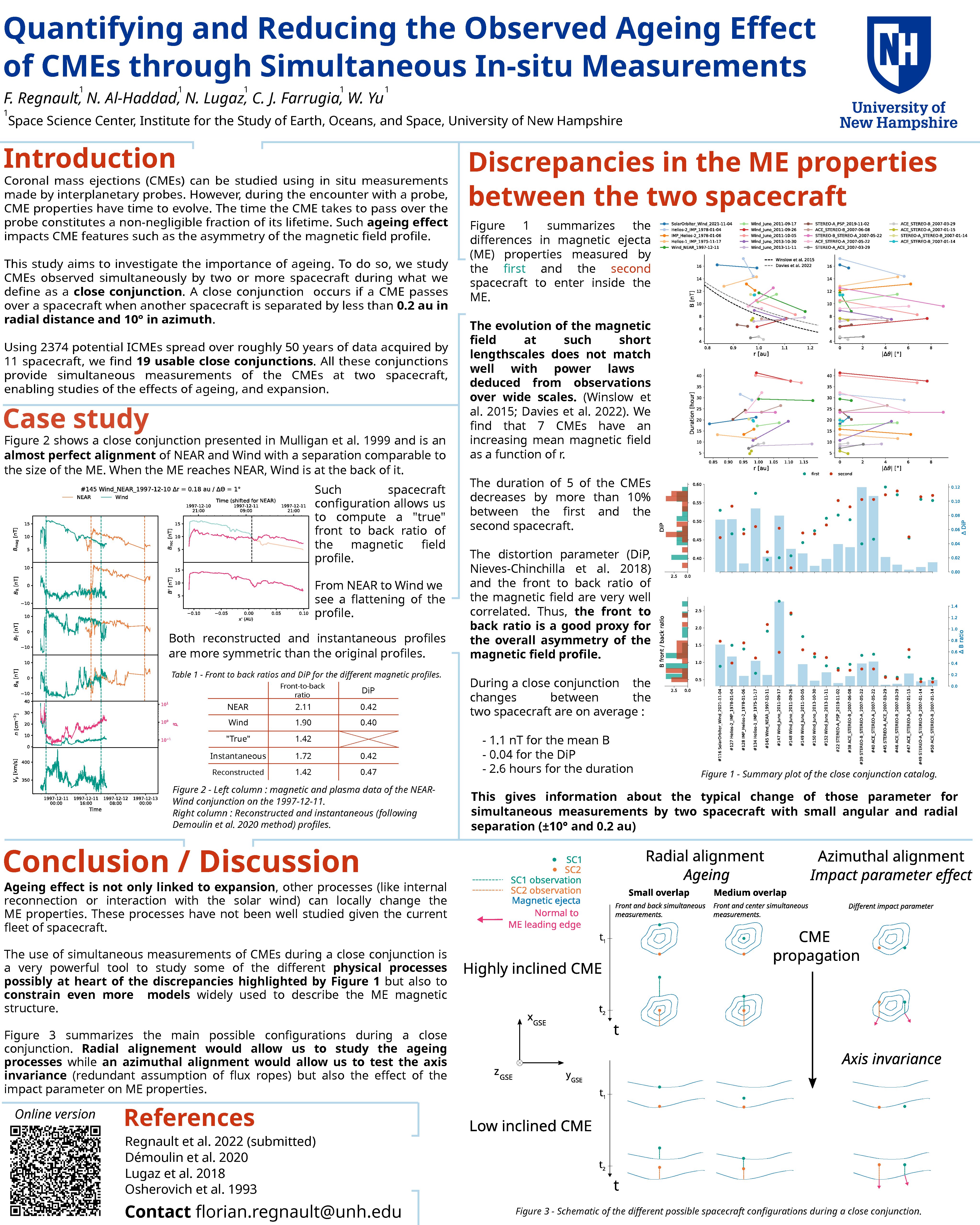Authors: F. Regnault (Space Science Center, Institute for the Study of Earth, Oceans, and Space, University of New Hampshire), N. Al-Haddad (Space Science Center, Institute for the Study of Earth, Oceans, and Space, University of New Hampshire), N. Lugaz (Space Science Center, Institute for the Study of Earth, Oceans, and Space, University of New Hampshire), C. J. Farrugia (Space Science Center, Institute for the Study of Earth, Oceans, and Space, University of New Hampshire), and W. Yu (Space Science Center, Institute for the Study of Earth, Oceans, and Space, University of New Hampshire)
Magnetic instability occurring in the solar atmosphere can lead to the ejection of magnetic structures (called magnetic ejecta) in the corona and the heliosphere. Through the use of in situ instruments on board of interplanetary probes, the magnetic and plasma properties of CMEs can be investigated and diagnosed. However, during the encounter of CMEs with a spacecraft, the CME continues to evolve and this “ageing effect” can impact observed CME features, such as the asymmetry of the magnetic field in in situ profiles.
This study aims at investigating the importance of ageing and its effect on the properties deduced from in situ profile of CMEs. To do so, we focus on CMEs observed almost simultaneously by at least 2 in situ probes separated by less than 10° in azimuth and 0.2 au in the radial direction.
We find that the average magnetic field of the same magnetic ejecta seen by two spacecraft changes by ~15 % of the average typical magnetic field profile of a magnetic ejecta and ~10 % for the average of the median profile. For two cases, we build a reconstructed B profile that is more symmetric than the original profiles. For one case, the reconstruction method finds a greater ageing effect than when it is estimated with the expansion deduced from the speed profile. This study highlights the need for multispacecraft missions with small radial separations dedicated to the study of CME.


